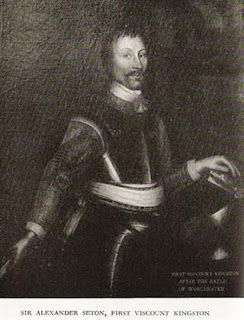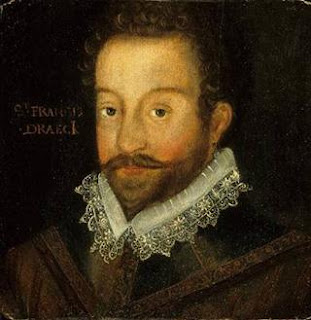On 29 April 2011 and then, Prince William and Kate Middleton have been officially married. Besides Prince William and Kate Middleton was awarded with the noble Duke and Duchess of Cambridge. This title is a title of nobility in UK are high compared to most other peerage. So what else underneath peerage. Here is the Meaning and Extent of the British Empire Nobility degree and a little history about it.
1. Duke (Duchess)
Duke is the highest degree of the five-level degree in the British nobility. This title comes from the Latin is 'Dux', which means 'leader', a term used in the Roman Empire to refer to a military commander who has no formal powers (especially those from Germany or Celtic), which later became the designation for leader of a military commander in the province of the Roman Empire.
-->
If a Duke is also a member of the armed forces, a minister or ambassador, rank or position they precede the title of nobility. For example, "Major-General the Duke of ...".A woman who was given the title Duke or the wife of a Duke always called the Duchess. In legal documents, the Duke was referred to as the "Most Noble William Edward Duke of ...".
In Britain, a degree with respect to the Duke that has been given in the royal family of the Duke of Cornwall, Duke of Lancaster, Duke of Clarence, Duke of York, Duke of Gloucester, the Duke of Bedford, Duke of Cumberland, Duke of Cambridge, Duke of Rothesay, Duke of Albany, Duke of Ross, Duke of Edinburgh, the Duke of Kent, Duke of Sussex and the Duke of Connaught and Strathearn.
2. Marquess (Marchioness)
Duke is the second title after the Marquess. A woman with the rank of marquess, or the Marquess's wife, called the Marchioness. The actual differences of degree Marquess and other knighted in more recent years become somewhat unclear. In the past, the difference between the Marquess and other noble titles is Marquess owned the land located on the border of the Kingdom. Therefore, a marquess is believed to maintain and fortify the kingdom against kingdom neighbors became enemies of the kingdom.
Lord or Lady is a proper greeting for them. Currently there are 34 Marquess in the United Kingdom. Britain is leading Marquess Marquess of Winchester, a title granted in 1551 (although he actually lived in South Africa). While leading the Scottish Marquess Marquess of Huntly was given in 1599.
3. Earl (Countess)
Earl or Countess (for the title of Earl in women) is ranked third in the knighthood. Earl initially serve as Governor of the Kingdom. They collected fines and taxes and in return they will receive one third of the money they collect. In wartime they will also lead the armies of King.
An Earl has the title "Earl of ..." when that title was derived from place names, or "Earl ..." when the title comes from a family name. An ordinary Earl addressed as Lord, and his wife greeted Lady. Meanwhile, a woman who has a degree also use Lady Countess, but her husband does not have a degree unless he has his own title.
Eldest son of the Earl has the right to use the title of Courtesy. The younger child was nicknamed "The Honourable ...", and their daughters were called" Lady ...". Lady Diana Spencer is a famous example of this case.
Earl title itself has been around since the time of King Canute (10th century). There are currently 191 Earl (not including the Earl of Wessex, Prince Edward) and Countess Courtesy Earldoms and four. Earl is the leading UK and Irish Earl of Shrewsbury and Waterford (currently Charles Henry John Benedict Crofton Chetwynd Chetwynd-Talbot).
4. Viscount (Viscountess)
Viscount term is known to be used in English since 1387, comes from the French Visconte. This title comes from the Roman empire, which refers to the local police chief. In the UK provision of this title was first recorded in 1440, during King Henry VI became King of England and France. He wants to unite the two countries by lifting John Beuamont as Viscount Beaumont Viscount Beaumont in England and in France.
In the UK as well as the use of the title Viscount honors for the heirs of the Earl or Marquess. An example is the son of the Earl of Wessex who was given the title Viscount Severn. Viscount Viscount referred to as lords rather than X while his wife is called Lady.
5. Baron (Baroness)
Baron is the last knighted in England. The word in Latin 'Baro' which means 'free man'. A woman with the title of Baron called the Baroness. King William I gave Baron degree as ranked in the UK for people who have pledged their loyalty to him.
In the 13th century the Baron summoned by the King to attend the hearing Counsel or Parliament. There are 426 hereditary baron of the Upper House of Parliament passed in the United Kingdom, in addition to those conferred by the Queen to those who have been deemed meritorious. The first Baron was officially given the title was John Beauchamp de Holt. He became Baron of Kidderminster, and the title was awarded by King Richard II in 1387. Greetings for a baron is quite as lord. Baroness called the lady alone. Title of Baron or Baroness is only used in legal documents, or formal. For nick they will be greeted with the title of Lord or Lady.
The title "Sir"
Sir is a title in English is formally associated with the knights.
Sir calls originating from medieval English sire, from the French Monsieur, which means "Master" of senior Latin adjectives ("old"), which is used to express reverence in many languages in Europe.
Sir used to addressing customers in formal correspondence (Dear Sir) or to a stranger (Sir, you dropped your hat).
The same shape for a woman is madam.
Read This Article Too Top 10 Richest Football Club Owners





